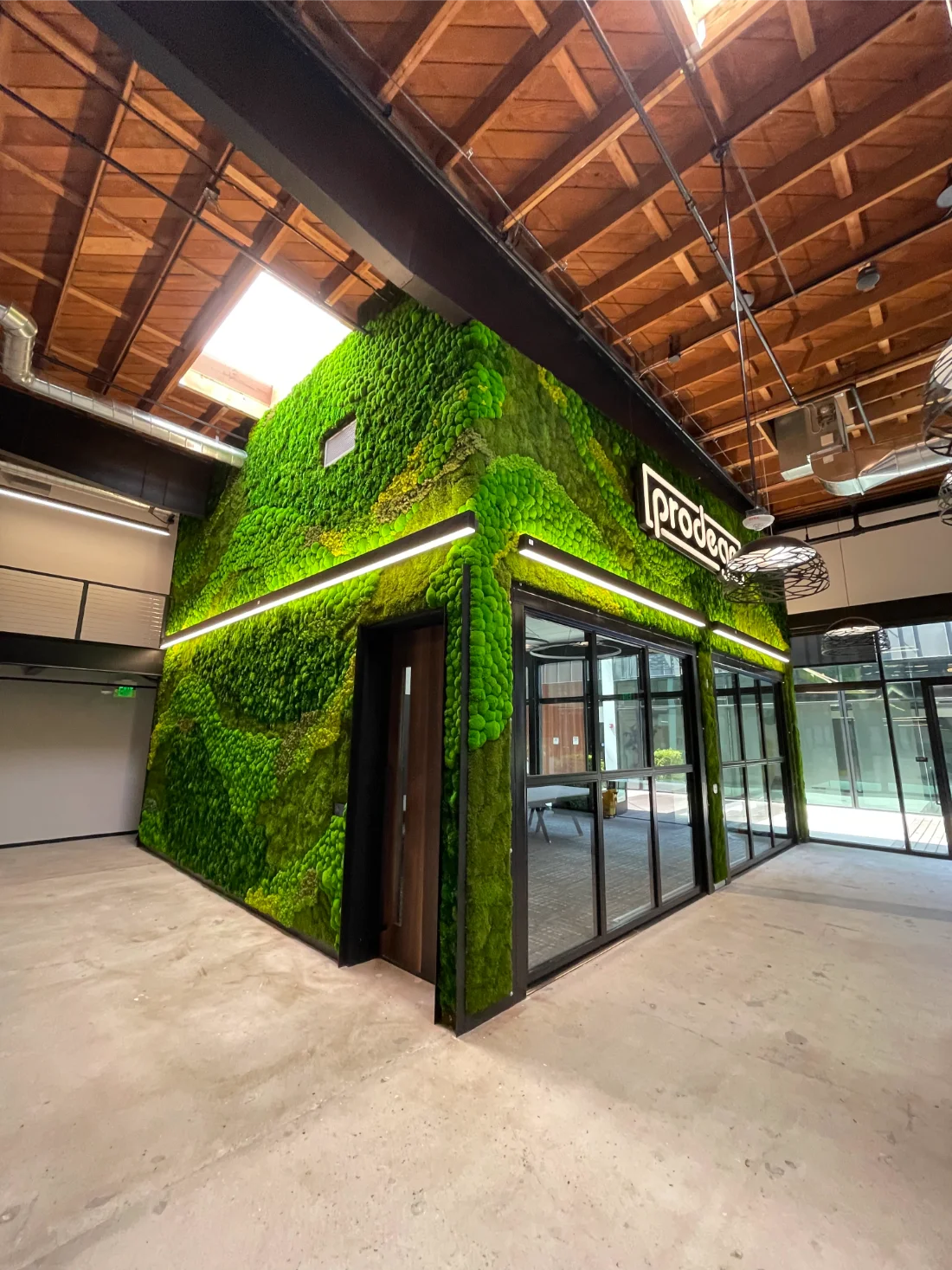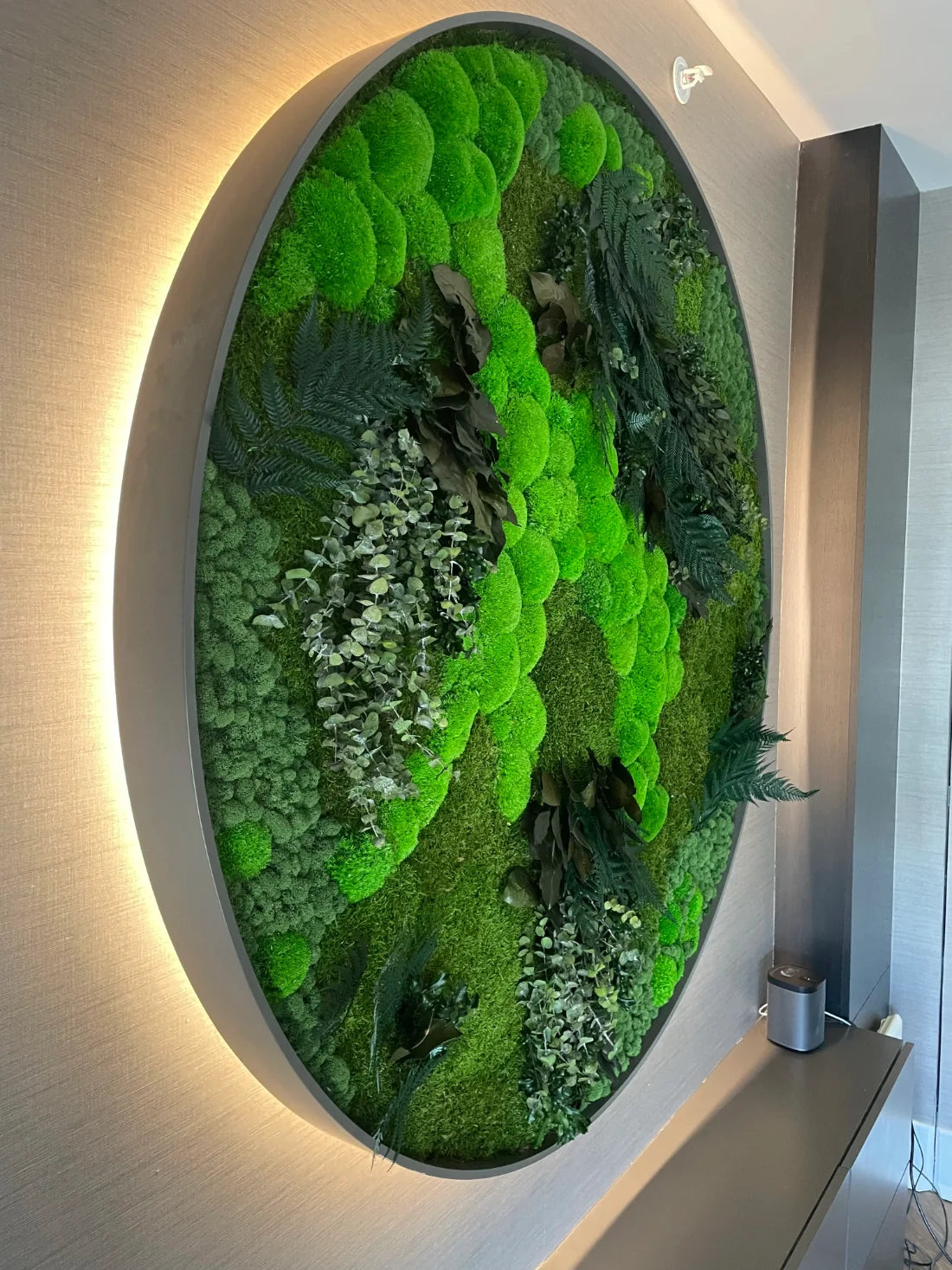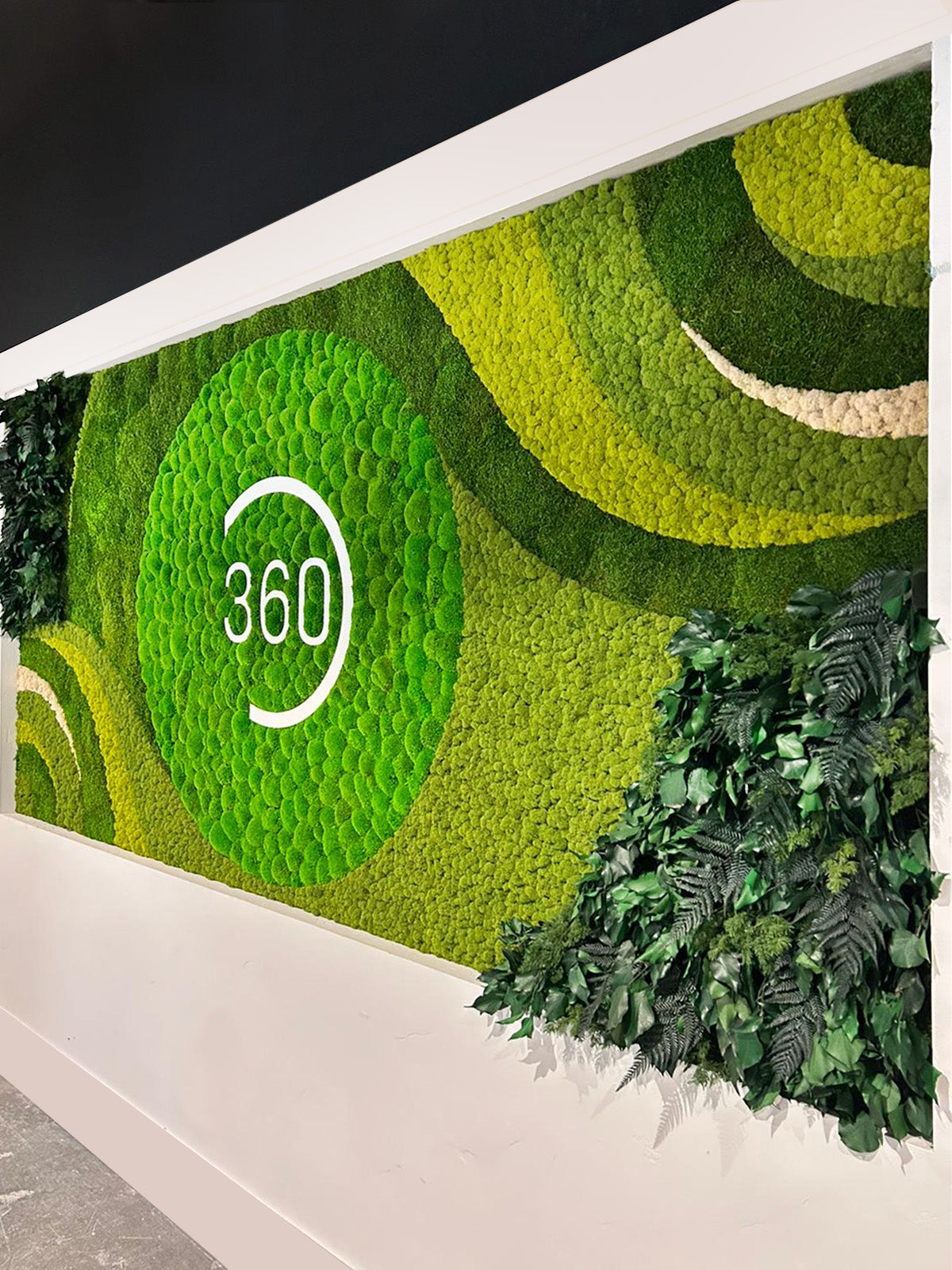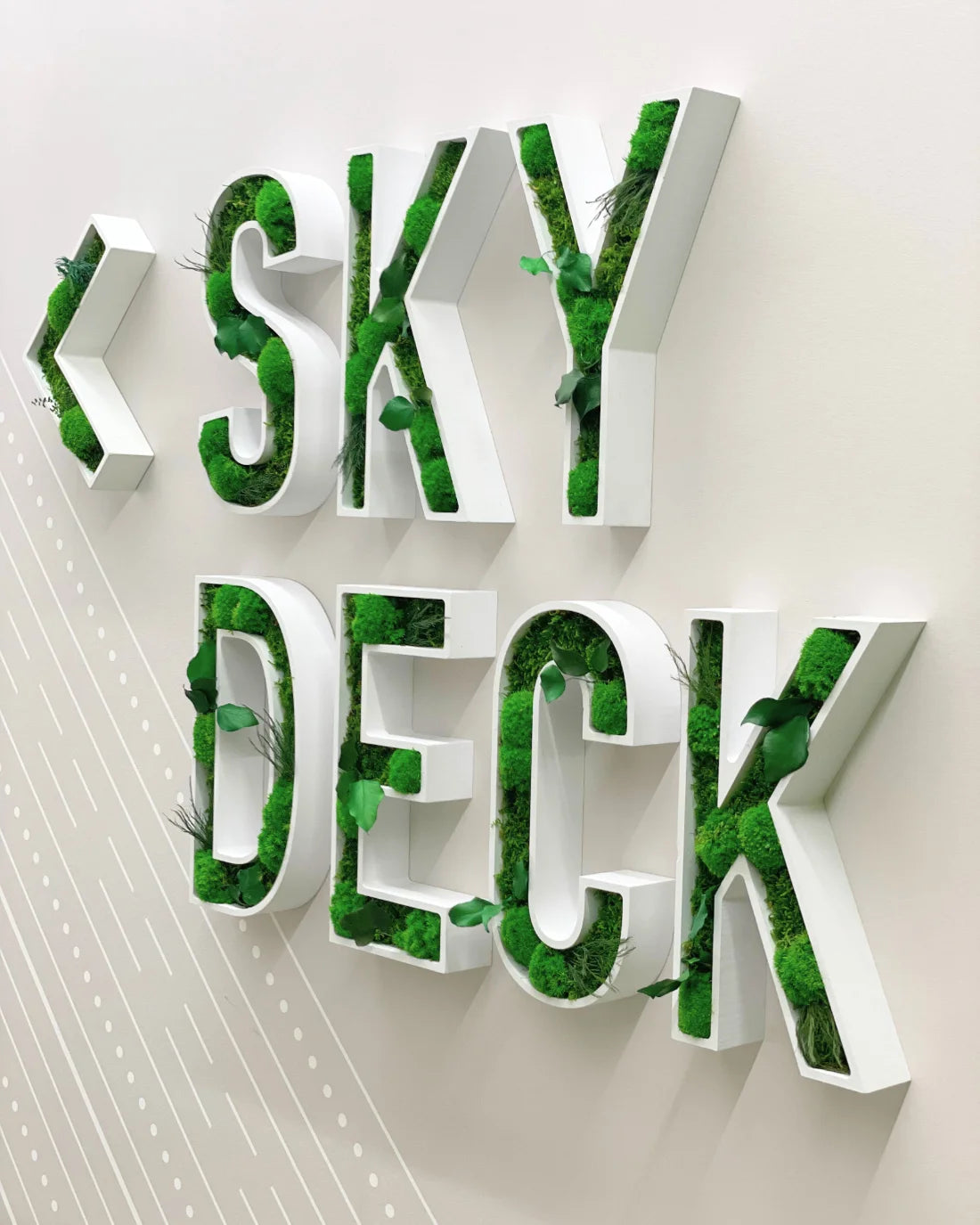
Creative Ways to Use Moss in Architectural Design
In recent years, moss has quietly emerged as a design element that bridges nature and modern architecture. Its soft textures, rich green tones, and sculptural forms make it both striking and versatile. Fully maintenance-free and able to retain its beauty for up to 10 years, moss brings depth, warmth, and a sense of calm to any space. Whether in residential interiors or large-scale urban projects, it transforms environments into settings that feel organic, alive, and enduring.
Here are some inspiring ways to use moss in architectural design:

1. Preserved Moss Walls
Preserved moss walls are becoming iconic in modern interiors. Unlike traditional living walls that require complex irrigation systems, preserved moss walls need little to no maintenance. They bring the tranquility of nature indoors while acting as a natural sound absorber.
2. Moss as Acoustic Panels
Moss has excellent sound-absorbing qualities. Designers often use moss-covered panels in offices, hotels, or restaurants to reduce noise levels while introducing a natural aesthetic.
3. Green Ceilings
Imagine looking up and seeing a lush moss ceiling. This design trend softens interiors, creates a sense of immersion in nature, and works especially well in spas, wellness centers, and modern office lobbies.

4. Moss Pathways and Floors
Architects experimenting with outdoor-indoor transitions sometimes incorporate moss into flooring systems. Between stone tiles or wooden slats, moss adds softness and a unique tactile experience.
5. Furniture Accents with Moss
Tables, benches, or partitions with moss inlays add a striking biophilic element. Designers use it to merge utility with living design—perfect for reception areas or lounge spaces.
6. Art Installations and Sculptures
Architects and interior designers increasingly use moss as a medium for sculptural installations. Whether it’s a logo wall in a corporate office or an abstract green art piece, moss adds life to otherwise static surfaces.

7. Urban Microparks
In dense cities, moss can be integrated into pocket parks, seating areas, and small courtyards. It brings greenery to limited spaces without the upkeep required by traditional plants.
8. Sustainable Branding Elements
Retailers and companies often use moss in branded spaces to showcase sustainability. Moss signage and displays reinforce eco-conscious values while creating memorable aesthetics.
Why Moss Matters in Architecture
Moss represents more than decoration. It embodies the growing movement toward biophilic design—building spaces that reconnect people with nature. With its low maintenance needs, natural beauty, and environmental benefits, moss is carving out a permanent place in contemporary architecture.
From lobbies to living rooms, from ceilings to city streets, moss is not just an aesthetic choice—it’s a statement of harmony between design and nature.
